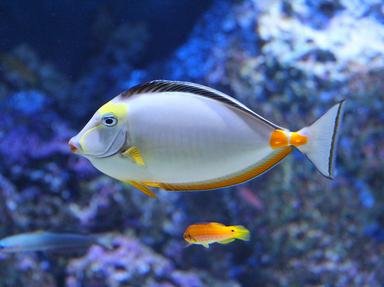Quiz Answer Key and Fun Facts
1. Scientists recently announced that the opah, a commercial fish that is increasing in popularity, is actually the world's first documented warm-blooded fish. What is the scientific name for the opah?
2. Let's separate fact from fiction about this amazing and beautiful warm-blooded fish. Which statement is NOT true?
3. Some fish such as tuna and some sharks exhibit limited warm-bloodness. Warm parts of their body which gives them a competitive edge over sluggish deepwater fish. Their internal organs cool off quickly, however, and they are required to return often to shallow water to warm up. What is the term used to denote this unusual ability?
4. Prior to the documentation of the opah as the first truly warm-blooded fish, what other animals were known to be warm-blooded (animals that maintain a constant body temperature, typically above that of their surroundings)?
5. The opah is the first fully warm-blooded fish that circulates heated blood throughout its body. How warm is the body temperature of the opah?
6. A special body part has adapted to allow the opah to pump warm blood throughout its body. What part of the body has been found to be responsible for the opah being a warm-blooded fish?
7. The opah is one of the most colorful of the commercial fish species, noted for its red fins and tail. By what other name is the opah commonly known?
8. The taste is said to be distinctive but not overpowering making it a flexible seafood choice. What does the taste of opah most resemble?
9. While the opah can be found in most tropical and temperate ocean waters of the world, in what unusual place has the opah been found?
10. The distinctive disc-like deep bodied shape and specialized pectoral fins are represented in Megalampris keyesi, a gigantic fossil opah twice the length of the modern opah. When did this specialized pectoral swimming characteristic of lampids first manifest in the fossil record?
Source: Author
Twibli
This quiz was reviewed by FunTrivia editor
Tizzabelle before going online.
Any errors found in FunTrivia content are routinely corrected through our feedback system.
